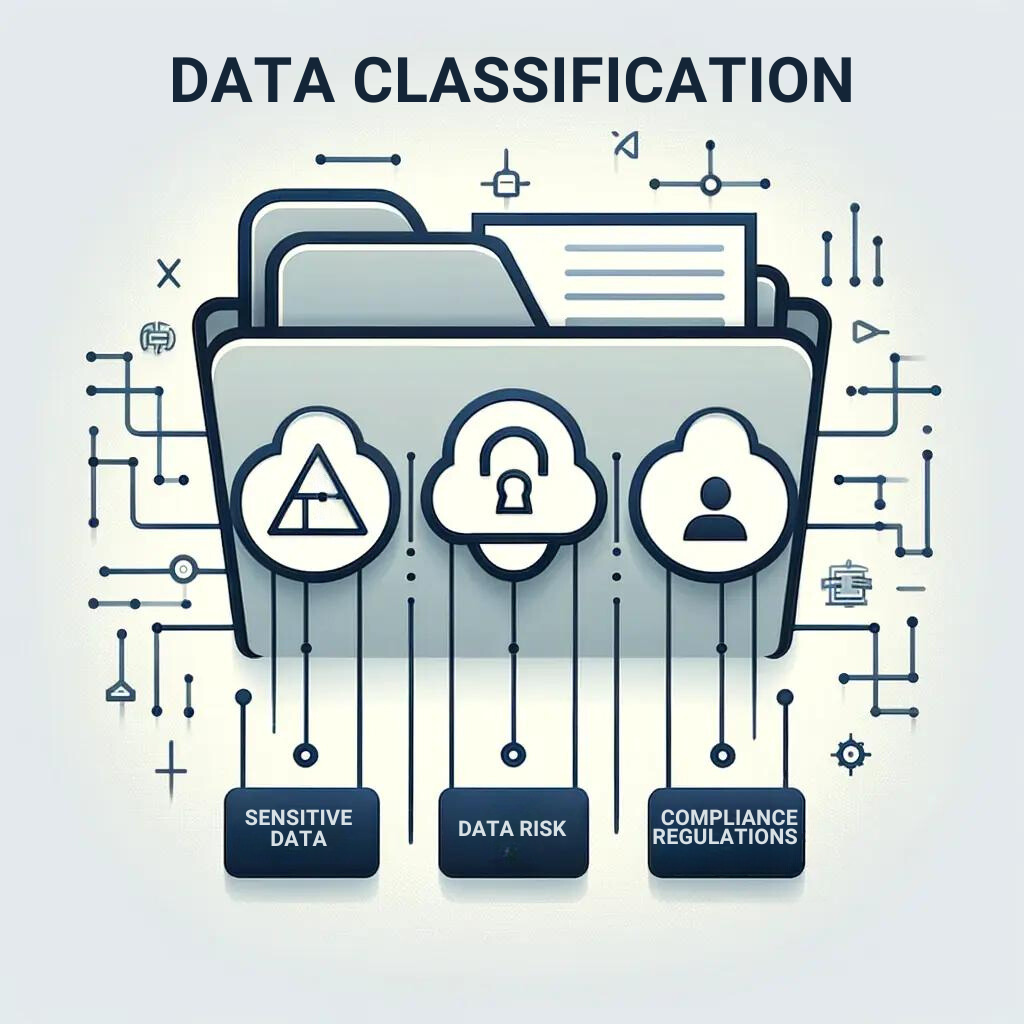
Data breaches are becoming too familiar these days and reaping devastating consequences. According to the Identity Theft Resource Center’s (ITRC) latest report, the number of reported data compromises in the US in 2023 increased by 78% compared to 2022, reaching 3,205.
The essence of strong data security begins with visibility. Understanding what data you possess, where it resides, and how it's being utilized is fundamental. Without clear visibility, we're essentially navigating in the dark, leaving our most valuable assets vulnerable to threats. This underscores the undeniable need for comprehensive data awareness to ensure that security measures are informed and effective, safeguarding against the rapidly growing threat of data breaches.
The Necessity of Accurate Data Classification for Security and Compliance
New data types and storage methods are relentlessly cropping up. This constant evolution poses a significant challenge for organizations to keep their data visibility and classification current. Amidst this fluid backdrop, it becomes increasingly difficult to maintain a clear view and control over data assets. This context sets the perfect stage for a comprehensive classification system tailored to modern data management.
Accurate data classification transcends mere compliance; it's about deeply understanding the varied nature of data within an organization. This understanding encompasses recognizing each data type's importance, sensitivity, and potential risks. Missteps like outdated classifications, mislabeling, or oversight can significantly elevate security risks. Beyond meeting regulatory demands, effective classification instills a culture of data awareness, fostering safer, more informed business decisions. This commitment not only sidesteps legal penalties but also cultivates trust and integrity, which are needed in today's data-centric business environments. This nuanced approach to data classification sets the stage for addressing common classification challenges while enhancing security and compliance frameworks.
The New Age of Data Classification
Organizations need to ensure they are combining automated classification with human insight. This strategy utilizes built-in classifiers, which cover a range of data types and compliance requirements, and custom classifiers, which can be tailored to specific organizational needs. This dual approach ensures both broad coverage and nuanced, organization-specific data handling.
Automated classification with customized tuning represents a significant evolution from traditional methods. This new system balances the use of built-in classifiers for standard data types, like PII, health, or financial information, with the ability for companies to create custom classifiers. This adaptability ensures that even unique, industry-specific data types are accurately identified and protected, providing a more comprehensive security posture.
- Built-in Classifiers: At the heart of automated classification are built-in classifiers for PII, GDPR, CCPA, Healthcare, and Financial data types, ensuring broad coverage across the spectrum of compliance requirements. These classifiers leverage a configurable sampling approach, typically set at 50 by default, to classify data accurately. The process draws on various heuristic signals, including field names, content, dictionaries, proximity to other sensitive data, and even patterns derived from query behaviors. This enhances classification accuracy and introduces an automated sensitivity level and tagging system, backed by confidence scoring, to evaluate and minimize false positives and negatives diligently. The system’s inherent weightage tuning further refines this process, favoring the side of false positives to err on the side of caution.
- Custom Classifiers: Complementing the built-in capabilities are custom classifiers, which offer organizations the flexibility to tailor the classification engine to their unique data landscapes. The customization options are extensive, whether it’s adjusting match criteria based on field names, content, existing dictionaries, or developing synthetic dictionaries (currently in progress). This adaptability ensures that even the most unique, industry-specific data types can be accurately identified and protected, offering a nuanced security posture that’s comprehensive and specific to organizational needs.
This dynamic duo of automated classification tools—built-in for broad compliance and custom for organizational specificity—equips businesses with the precision needed in today’s data-centric world. By intelligently merging these approaches, organizations can ensure their classification strategies are compliant and tailored to their unique security and privacy landscapes.
The Mechanics of Advanced Data Classification and Sensitivity Tagging
In an advanced data classification framework, the initial step involves an exhaustive collection of data, which must be analyzed for context, content, and user interaction. This rigorous examination allows for an accurate understanding and categorization of the data, which is critical in accurately addressing security and compliance.
Following this, sensitivity tagging, which intertwines the outcomes of the initial data classification with bespoke organizational guidelines, plays a crucial role. This process involves defining what constitutes sensitive information within the specific context of the organization's risk management framework and compliance obligations. A flexible system that integrates and adapts to these internal directives is necessary to effectively refine the data categorization process.
The ultimate success of this classification system hinges on the alignment with organizational guidance. This means tailoring the process to meet the company's unique needs, which vary widely based on industry, data types handled, and specific risk profiles. The system must be dynamic, allowing for updates and adjustments as the organization's needs and the regulatory landscape evolve. This adaptability ensures that data categorization remains precise, enhancing the company's security measures and ensuring a robust defense against data breaches and compliance violations. Companies can significantly strengthen their data security posture and compliance readiness by employing such an advanced and nuanced classification system.
Building an Effective Company-Wide Data Classification System
Creating a company-wide data classification system is critical for safeguarding sensitive information and ensuring compliance. Here's a simplified approach to setting up an effective system:
- Identify Classification Levels: Define key categories like Restricted/Confidential, Internal/Proprietary, and Public to match the types of data you manage and their associated risks or regulations.
- Conduct Risk Assessment: Collaborate with your legal and compliance teams to grasp the specific obligations for your data, identifying vulnerabilities and applicable laws.
- Formulate a Classification Policy: Draft a clear policy that dictates how data is classified and handled, ensuring it's straightforward for all employees to follow.
- Implement Data Mapping and Tracking: Employ automated data discovery tools to track data movement through your systems accurately, ensuring no data is overlooked and correctly classified.
- Apply Automated Security Controls: With data mapped and classified, enforce tailored security measures such as encryption and access controls to protect sensitive data.
- Educate and Update: Provide ongoing training on the importance of data classification and ensure your system evolves with changes in data handling practices and regulatory landscapes.
This approach ensures a thorough understanding of your data's nature and location, bolstering your defense against breaches and compliance issues.
Integration and Optimization of Data Security in Modern Environments
Security and data teams face unprecedented challenges in managing and safeguarding their data today. They must navigate a landscape of diverse data storage solutions, varying data types, and intricate compliance regulations. Data security and governance are no longer optional but critical components of organizational resilience and growth.
Adopting a holistic data security strategy is one practical approach to navigating these challenges. This involves employing automated tools for data store auto-discovery, ensuring all data repositories, whether in the cloud or on-premises, are identified and protected. According to Gartner, 60%-90% of companies have dark data, and though security teams don’t know what they don’t know, they are still accountable for that unknown data. Leveraging configuration analysis tools to review and optimize data store settings can significantly mitigate misconfiguration risks, reducing the potential for unauthorized access.
Moreover, establishing robust data classification and tagging frameworks is crucial. Organizations can implement targeted security measures like encryption and access controls by systematically classifying data based on sensitivity and regulatory requirements. This process should be complemented by continuous data-in-use monitoring, allowing for real-time detection of suspicious activities or policy violations. This comprehensive approach strengthens data protection and aligns with compliance mandates.
Security and data teams should also focus on privilege analysis, ensuring access rights are strictly based on the principle of least privilege. Regular reviews and adjustments to user permissions help prevent data breaches and limit exposure in case of an attack. Furthermore, integrating data security solutions with existing data catalogs enhances visibility, streamlines governance efforts, and fosters a culture of informed data utilization.
A Direct Call to Advance Data Classification
The need for advanced data classification is clear and urgent in the face of increasing data breaches. Data breaches aren't just news items; they're a wake-up call to all of us in the security field. They remind us that traditional methods aren't enough anymore. Understanding exactly what data you have, where it is, and who can access it is fundamental to creating a security framework that stands up to today's threats.
Visibility, accurate classification, and sensitivity tagging are essentials, not luxuries. Without them, your security measures become guesswork. But remember, the landscape is constantly changing—new data types, regulations, and threats. Your approaches must keep pace, adapting to your organization's requirements and the external regulatory environment.
It's time to reassess your data classification strategies. If your current system isn't cutting it—if it's not flexible, comprehensive, or up to date—you must act. Adopt systems that meet today's standards and are equipped to learn and evolve with tomorrow's challenges. This is more than a recommendation for security professionals; it’s a call to action to protect your organization's data and ensure regulatory compliance. If you’d like a partner to work with to implement or advance your data classification strategy, contact Dasera today!









